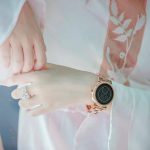It’s natural to wonder about the safety of wireless headphones. This is especially true with concerns about Bluetooth radiation. But before worrying, let’s probe into the facts. Bluetooth emits radiation. But, it’s non-ionizing and not cancer-causing. Experts advise measured use of them. This includes limiting volume and taking breaks to protect your hearing. This article aims to debunk myths. It will provide you with the truth about wireless headphone safety. So, you can enjoy your music without worry.
The Concerns Surrounding Wireless Headphones
The Petition and Health Risks
Before we’ve discussed the concerns about wireless headphones, we must address a petition. Scientists signed it in 2015. They expressed worry about health risks from EMF technology. This includes concerns about cancer risks related to Bluetooth devices.

What is Bluetooth Technology?
Wireless headphones use Bluetooth technology to create short-range wireless connections between devices. Bluetooth devices emit radiofrequency (RF) radiation. RF is a type of non-ionizing radiation, which is a kind of electromagnetic radiation. Bluetooth devices emit less radiation than cell phones. But, using them for a long time may lead to exposure.
Exposure comes from the radio frequency radiation emitted by wireless Bluetooth devices. This radiation is non-ionizing. So, it doesn’t have the energy to harm your health. Unlike ionizing radiation, which can damage tissues and DNA, causing cancer.
Understanding Radiation and Cancer
Non-Ionizing vs. Ionizing Radiation
If you’re concerned about wireless headphone safety, you must understand the difference. It’s between non-ionizing and ionizing radiation. Bluetooth emits non-ionizing radiation. It lacks the energy to harm you. But ionizing radiation is different. X-rays and radioactive waste contain it. It can damage tissues and DNA.
The Connection Between Radiation and Cancer
Experts consider any substance or exposure that may lead to cancer as a carcinogen. Radiation falls under this category. Ionizing radiation poses a greater threat because it can damage cells. Bluetooth technology emits non-ionizing radiation. It’s not deemed to cause cancer. But, we need more research. It’s to to show clear links between RF radiation and health effects.
Debunking the Myths: Is Bluetooth Technology Safe?

The Science Behind Bluetooth Radiation
Bluetooth technology uses non-ionizing radiation, which isn’t cancer-causing. Devices like wireless headphones emit radiofrequency (RF) radiation. However, they emit less than cell phones. The exposure level is minimal, especially when compared to holding your phone up to your ear.
Expert Opinions on Cancer Risk
Science has not proven that Bluetooth devices cause health problems. They don’t cause cancer. The problems are from RF radiation. Experts say Bluetooth devices emit little radiation. It’s well below U.S. safety standards. However, researchers need to conduct more studies to draw conclusive results.
Reducing Exposure to Radiation
Government Safety Standards
An important point to consider is that Bluetooth devices follow safety standards. This includes wireless headphones. The standards are set by the U.S. government for the amount of radiation emitted. These devices are in contact with the skin. But, they are well below the safety limit.
Practical Tips for Minimizing Exposure
To reduce your exposure to risks, consider these practical tips:
- Avoid prolonged use of wireless headphones, limiting your daily use to 60-90 minutes.
- Take regular breaks from headphones. Keep the volume below 60-80% to protect your hearing.
After all, protecting your well-being should always be a priority.
The Bigger Picture: More Immediate Health Risks
Your health is more at risk from immediate dangers like hearing loss when it comes to headphone use. Handle your headphones with precision. This is to protect your hearing and health.
Hearing Loss and Headphone Safety
Hearing loss can result from irresponsible headphone use. Limit your headphone use to 60-90 minutes daily, with regular breaks and at a volume of no more than 60% to 80%. Lower the volume. This is especially important for longer listening periods. It’s especially important to prevent irreversible hearing damage.
Responsible Headphone Use
Misused headphones can cause permanent hearing loss. To protect your hearing, limit your headphone use. Take breaks and watch the volume. Consider noise-canceling headphones. They help you avoid the urge to blast the volume. Also, they help you stay aware of your surroundings for safety.
A Quick Review: Separating Fact from Fiction
The Current State of Research
Many worry about Bluetooth radiation. However, current research doesn’t suggest that wireless headphones are a big risk. Fictional claims linking Bluetooth technology to cancer remain unsubstantiated. Bluetooth devices emit little radiation. The amount is well below U.S. safety standards. This makes them safe for daily use.
Taking Control of Your Health
Wireless headphones have risks. They can damage hearing. These risks are more immediate than worries about radiation. To take control of your health when using headphones, limit your usage to 60-90 minutes daily. Also, take regular breaks and keep the volume moderate. Be mindful of your headphone usage. It’s can protect your hearing and well-being.
Final Words
With this in mind, it’s crucial to tell fact from fiction. This is true for the safety of wireless headphones. Despite concerns about Bluetooth radiation, experts generally agree that the risk is minimal. You can choose wired or wireless headphones. But, you should take precautions. Limiting volume and usage time can help protect your hearing. Discover, absorb, and relish your favorite tunes with assurance.







